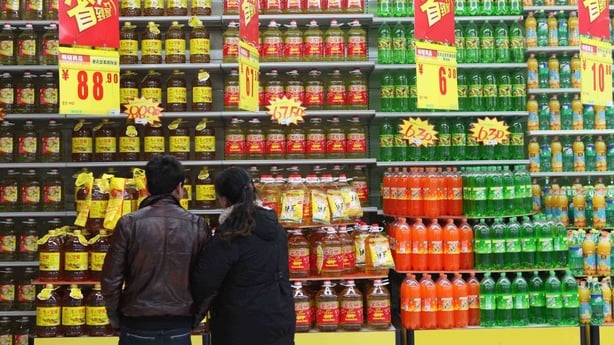China's statistics bureau said it had suspended publication of youth jobless data, citing the need to improve methodology in the way it measured unemployment among young people, which has hit record highs in recent months.
The decision announced shortly after the release of weaker-than-expected factory and retail sales data sparked a rare backlash on social media amid growing frustration about employment prospects in the country.
"At present the majority of graduating university students have already confirmed their employment destination and their employment situation is generally stable," said Fu Linghui, a spokesman with the National Bureau of Statistics.
He added that the graduate employment rate is "slightly higher than in the same period last year".
Young Chinese are facing their toughest summer job-hunting season after regulatory clamp-downs in recent years left traditional sources of graduate employment - including the property, tech and education sectors - bruised.
The most recent NBS data on youth unemployment, published last month, showed the jobless rate jumping to a record high of 21.3% in June.
Some 47% of graduates returned home within six months of graduation in 2022, up from 43% in 2018, state-run China News Service reported last week, citing a private-sector survey.
The NBS's Fu said data would be suspended because "the economy and society are constantly developing and changing, statistical work needs to be continuously improved".
The issue of whether current jobhunting students should be included in jobless statistics and the definition of the age range, "needs further research," Fu said.
China's youth unemployment data had tracked the 16-to-24 age bracket.
The NBS's decision was immediately mocked on Chinese social media, with a related hashtag receiving over 10 million views on microblogging site Weibo.
"If you close your eyes then it doesn't exist," read one comment liked over 5,000 times.
"There is a saying called 'burying your head in the sand'," wrote another user.
A Chinese professor last month said the country's true youth jobless rate may have been closer to 50% in March, in rare public comments about the matter published in an article for financial magazine Caixin. That article was later censored.
China retail sales growth slows, falling below forecasts
China has also today released weaker than expected economic data, with slowing retail sales growth pointing to shaky consumer confidence in the world's second-largest economy.
A slew of disappointing figures in recent months has reflected a slump as China's post-Covid rebound fades.

Retail sales, a key gauge of consumption, grew 2.5% year-on-year in July, the National Bureau of Statistics said today, down from 3.1% in June and falling short of analyst expectations.
Chinese leaders have sought to boost domestic consumption in recent weeks, with the State Council last month releasing a 20-point plan to encourage citizens to spend more in sectors including vehicles, tourism and home appliances.
Officials cut the medium-term lending facility (MLF) rate - the interest for one-year loans to financial institutions - from 2.65% to 2.5%.
A lower MLF rate reduces commercial banks' financing costs, in turn encouraging them to lend more and potentially boosting domestic consumption.
The country's top leaders, known as the Politburo, have warned that the economy faces "new difficulties and challenges" as well as "hidden dangers in key areas".
The NBS said industrial production grew 3.7% in July from a year ago, down from 4.4% in June.
The recent data suggests that China may struggle to achieve a 5% growth target set for the year.
The world's second-largest economy only grew 0.8% between the first and second quarters of 2023, according to official figures.
Many economists are now calling for a vast recovery plan to boost activity.
But for the time being, the authorities are sticking to targeted measures and declarations of support for the private sector - with little in the way of tangible steps.

